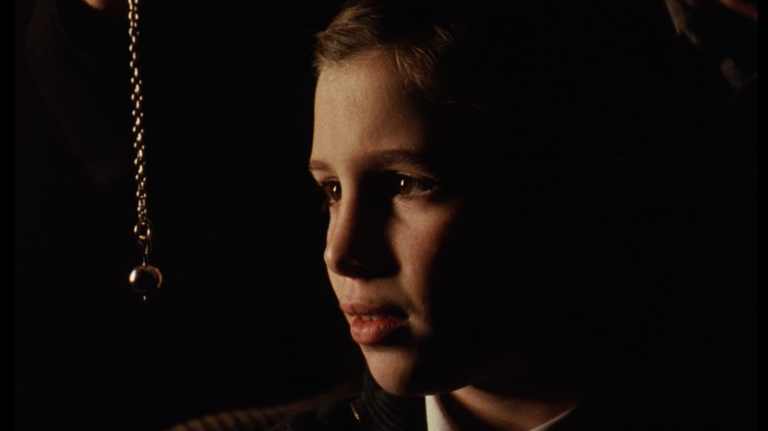If, as the writer Charles Baudelaire asserted, “genius is childhood recalled at will,” then the Spanish director Victor Erice is a genius. In his 1983 film “El Sur,” he conveys the poignant story of Estrella, a girl growing up during Franco’s reign in Spain. Estrella lives in the cold, forbidding north of the country. Her father is a scientist. To the ignorant villagers, he seems to be some kind of miracle worker as he uses a pendulum or measures depth for a well. He explains to Estrella the mechanics of each phenomenon, but he refuses to tell his daughter about his own childhood. He grew up in the south of Spain in a time of intense strife. At first, Estrella is too young to comprehend her father’s demons. To her, the south is simply a tropical locale. As she gets older, however, she realizes that her father is a complex, tortured man. Through Estrella’s story, Erice explores the profound mysteries of youth and examines the lingering effects of trauma.
“El Sur” is only 90 minutes long, and in that time, Estrella ages from a curious child to a contemplative woman. Yet, the film never seems rushed. The adult Estrella comments on her childhood in voiceover. She bridges some of the abrupt cuts in the film. For example, after Estrella tries to hide from her father as a little girl, the adult Estrella enigmatically says, “I grew up more or less like everyone else does. I got used to being alone.” These comments not only provide transitions between moments in time, but they also supply perspective. Within the frame, Estrella carefully experiences youth and adolescence, but on the soundtrack, a mature adult ponders the meaning of her formative years.
Erice’s images similarly mark the passage the of time and the acquisition of insight. Erice worked with the cinematographer Jose Luis Alcaine to create painterly compositions, flooded with light and color. Early in the film, the frames seem tinged with a golden hue. In some sense, these shots recall the work of the 19th-century painter Francisco Goya. Goya was the court painter for Charles III, and he often focused on families of the Spanish nobility. He painted the son of the count and countess of Altamira. The little boy appears in a gossamer crimson dress, and bright light bounces off a wall behind him. Likewise, Erice and Alcaine photograph Estrella in her communion dress. She too is ensconced in glorious, bountiful light.
Yet, just as Goya exchanged his warm color palette for bleak black tones, so Erice and Alcaine alter the hues they use. As Estrella ages and begins to understand that her father is a complicated man, he transforms into a monumental presence that eclipses everything around him. In a way, he resembles Goya’s depiction of Saturn in his late painting. Just as Saturn devours his son, Estrella’s father has devoured the light that filled the earlier images. As she comes closer to adulthood, Estrella’s perspective of her father shifts once again. He shrinks and becomes an ordinary man. These final images are suffused with cool colors. Frequently, the camera observes Estrella’s father from a distance. Now that she is grown, Estrella can consider her father’s actions objectively. He no longer appears to be an incarnation of Goya’s monster.
Erice, however, shares another concern with Goya – the lingering traumas of war. Goya made a series of stark etchings highlighting the human cost of the Napoleonic Wars in Spain. Erice does not actually portray the events of the Spanish Civil War, but throughout the film, he suggests that it has permanently shaped Spain and affects Estrella’s childhood. Estrella cannot understand why her father left the south. She knows the region only from picturesque postcards, and it seems irresistibly exotic. Then, her grandmother and friend come up north to visit. They tell her that her father had a falling out with her grandfather. While her grandfather supported Franco, her father fought in the Republican Army. After Franco won, her father resolved never to return. The decision has weighed heavily on him.
Later, Estrella sees her father surreptitiously visit a movie theater. He keeps patronizing films that star an obscure actress, Irene Rios. Estrella soon discovers that her father had a romance with Irene, but their idyll was disrupted by the conflict. His inability to stay with her has become a source of turmoil.
It’s significant that Estrella’s encounters with the country’s past are all mediated through art. She needs her grandmother’s stories or the movies in order to understand history. Ultimately, in “El Sur,” Erice reflects on art’s capacity to serve as a conduit to the past. If Estrella turns to art to comprehend the civil war, Erice’s art illuminates a more intimate, but no less interesting, past – that inscrutable realm called childhood.
Contact Amir Abou-Jaoude at amir2 ‘at’ stanford.edu.
